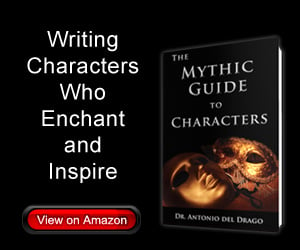Again, I will not go down the Accuracy rabbit hole, not after luminaries like Derrida lie in wait there.
Rather than worry about accuracy, as a teacher I look to what I'm trying to communicate. If I describe the baptism of Pomerani pagans in a series of bullet points, that's one method. If I use the words of Herbordus and deliver an extended quote, that's another approach. If I use the illustration, which is abstract and is about a different mission altogether, then I'm sliding over into analogy.
If I use a vivid image constructed by AI, that accords well with the source material, then I count that as the best of the alternatives.
There is, without doubt, an impact on human illustrators, who have just lost a job (not much of one, in this case, but a gig's a gig). I could be disingenuous and say no human would ever get such a job because it'd cost too much and us poor historians ain't got that kind of dough. But on someone else's other hand, it's equally disingenuous to pretend that somehow all illustrations would be hand-drawn, with paper and ink or analogues thereof, and every illlustrator would be fully employed. We might as well wish to bring back puppeteers and FX specialists to Hollywood to hand-craft our movies for us.
More than the tech, though, what catches my interest is the question of learning. Looking merely at the four choices above, can I say more is learned via one method than another? Or, even more interesting, can we say that there is different learning that happens? And if the whole of the curriculum follows one path rather than another, do we then produce a different kind of historian?
Rather than worry about accuracy, as a teacher I look to what I'm trying to communicate. If I describe the baptism of Pomerani pagans in a series of bullet points, that's one method. If I use the words of Herbordus and deliver an extended quote, that's another approach. If I use the illustration, which is abstract and is about a different mission altogether, then I'm sliding over into analogy.
If I use a vivid image constructed by AI, that accords well with the source material, then I count that as the best of the alternatives.
There is, without doubt, an impact on human illustrators, who have just lost a job (not much of one, in this case, but a gig's a gig). I could be disingenuous and say no human would ever get such a job because it'd cost too much and us poor historians ain't got that kind of dough. But on someone else's other hand, it's equally disingenuous to pretend that somehow all illustrations would be hand-drawn, with paper and ink or analogues thereof, and every illlustrator would be fully employed. We might as well wish to bring back puppeteers and FX specialists to Hollywood to hand-craft our movies for us.
More than the tech, though, what catches my interest is the question of learning. Looking merely at the four choices above, can I say more is learned via one method than another? Or, even more interesting, can we say that there is different learning that happens? And if the whole of the curriculum follows one path rather than another, do we then produce a different kind of historian?

 Myth Weaver
Myth Weaver
 Istar
Istar